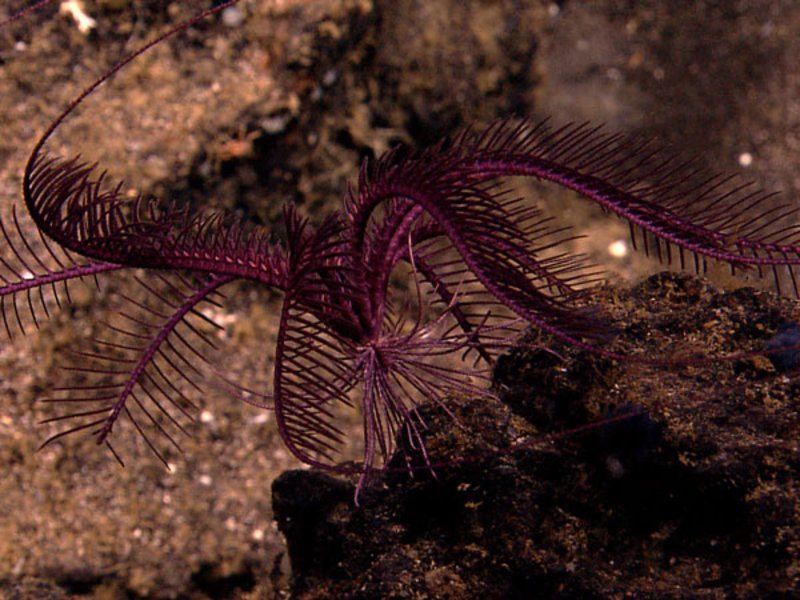
A stunning purple Sea Lily filters the current for food. Image courtesy of the NOAA Office of Ocean Exploration and Research, INDEX-SATAL 2010. Download larger version (jpg, 1.9 MB).

A stunning purple Sea Lily filters the current for food. Image courtesy of the NOAA Office of Ocean Exploration and Research, INDEX-SATAL 2010. Download larger version (jpg, 1.9 MB).
The ROV was deployed today for its second dive of cruise leg 3 on "Site T", a submarine volcano in the southwest corner of the INDEX SATAL 2010 operating area. We started the ROV dive at the southern peak of the volcano’s main cone, and made our way to the northern peak of the main cone. The seafloor was heavily covered in dark-yellow sediment. Faunal abundances were very low. Sea fans and black corals were dominant. As we moved over the summits of peaks, the area of exposed rock increased as well as the abundance of biota. The region in between peaks was sandy with stalked sponges and zoanthids as the dominant fauna. Abundant staining on rocks resembling iron oxides was observed. Such staining was localized to what appeared to be cracks in the rock. Small tubes were observed in one of the stained cracks – possibly tubeworms – but no evidence suggested that they were still alive. Shimmering in the water was observed early in the dive but no source could be identified. From the northern cone we moved southeast to a secondary cone at approximately 870m depth. Progressing down-slope from this cone, exposed rock coverage increased, the current was stronger and faunal abundances increased. This trend remained as we progressed eastward down slope over a knoll. Gorgonians and black corals dominated the benthic landscape. A stony coral was observed surrounded by a big colony of hydroids. In general, the diversity of Site T was equivalent to the diversity found in Site K, however the abundances here were generally significantly lower.